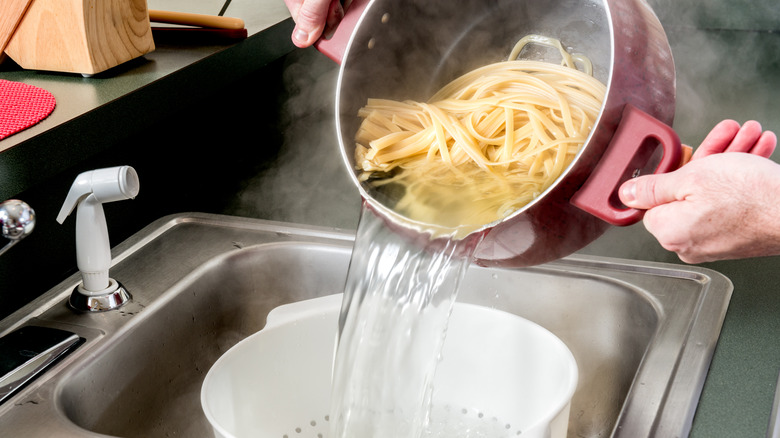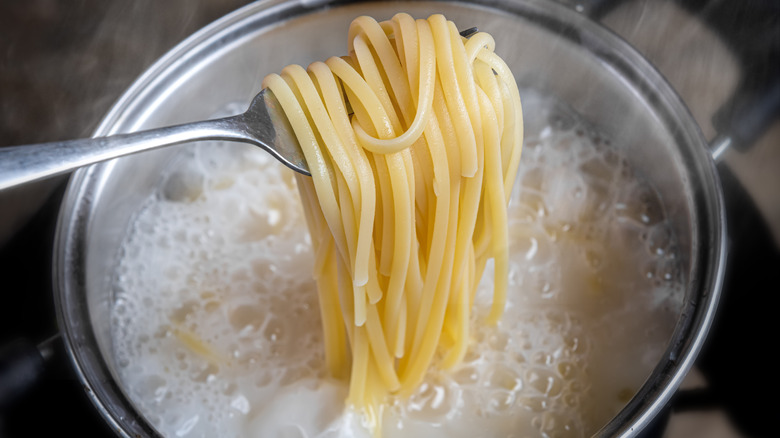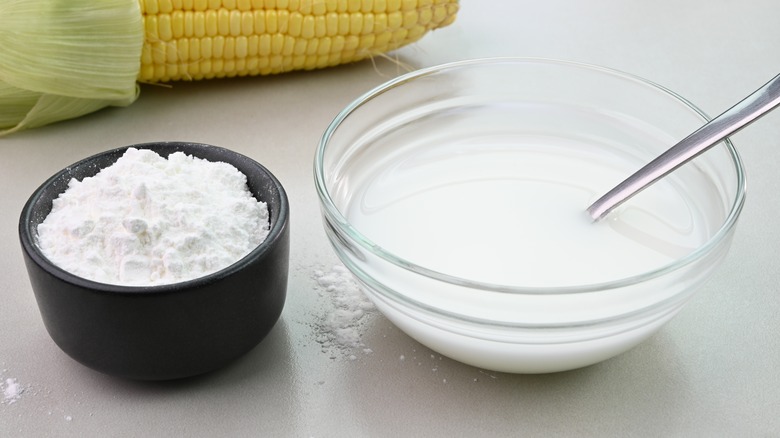The Easiest Substitute For Accidentally-Dumped Pasta Water
The eggs are whisked, the cheese is grated, and the guanciale is perfectly fried. You have almost all the components you need to make the perfect carbonara sauce, and now all that's left to do is toss it with the pasta and a splash of the leftover water from the pot. That's when it hits you — while you were straining your pasta, you forgot to set aside some of that starchy water to bring your sauce together later in the recipe.
If this has happened to you before, you probably thought there was nothing you could do except proceed with your recipe sans pasta water. After all, it doesn't make sense to boil a second batch of pasta just for a ladleful of the water that remains. As it turns out, however, the same water you get from cooking pasta can be replicated with just two ingredients: cornstarch and water. This mixture can easily be used as a 1-to-1 substitute for the pasta water you accidentally dumped out.
Why you can't substitute plain water
Anytime you forget to reserve pasta water, you might be tempted (or forced) to use plain water instead, but there's a good reason you should take the extra step of adding cornstarch to it. You might assume that the defining trait of pasta water is the added salt, but in reality, it's starch. When pasta gets cooked, the starches on its surface get released into the water. This is what makes it cloudy, but it's also what makes it such an important element in many pasta recipes.
Starchy water does three things when combined with pasta sauce. Perhaps most obviously, it gives the sauce a slightly thicker, more velvety consistency than if you were to add plain water. It also helps the sauce stick to the pasta better, so it doesn't run right off. And in sauces that include oil or butter, starchy pasta water acts as an emulsifier. Without the starch, plain water just thins out the sauce.
How much cornstarch does it take to make pasta water?
To make pasta-less pasta water, use a ratio of 1 cup of water to ¼ teaspoon of cornstarch. The solution might turn out lumpy if you combine the two all at once, so for best results add a little water at a time. Though real pasta water straight out of the pot is usually hot, when making a pasta water replacement, you'll want to add the cornstarch to cool water, as hot water tends to lead to clumping. Only when the cornstarch and water are properly combined should you heat it up.
Since cornstarch is a starch as well — just extracted from corn rather than pasta – it makes great DIY pasta water, but if you don't have any on hand, flour can work too. In order to achieve the same level of starchiness, however, you'll need to double the amount of flour to half a teaspoon for every cup of water. But regardless of whether you use cornstarch or opt for flour instead, it'll still be better than using plain water or no pasta water at all.


